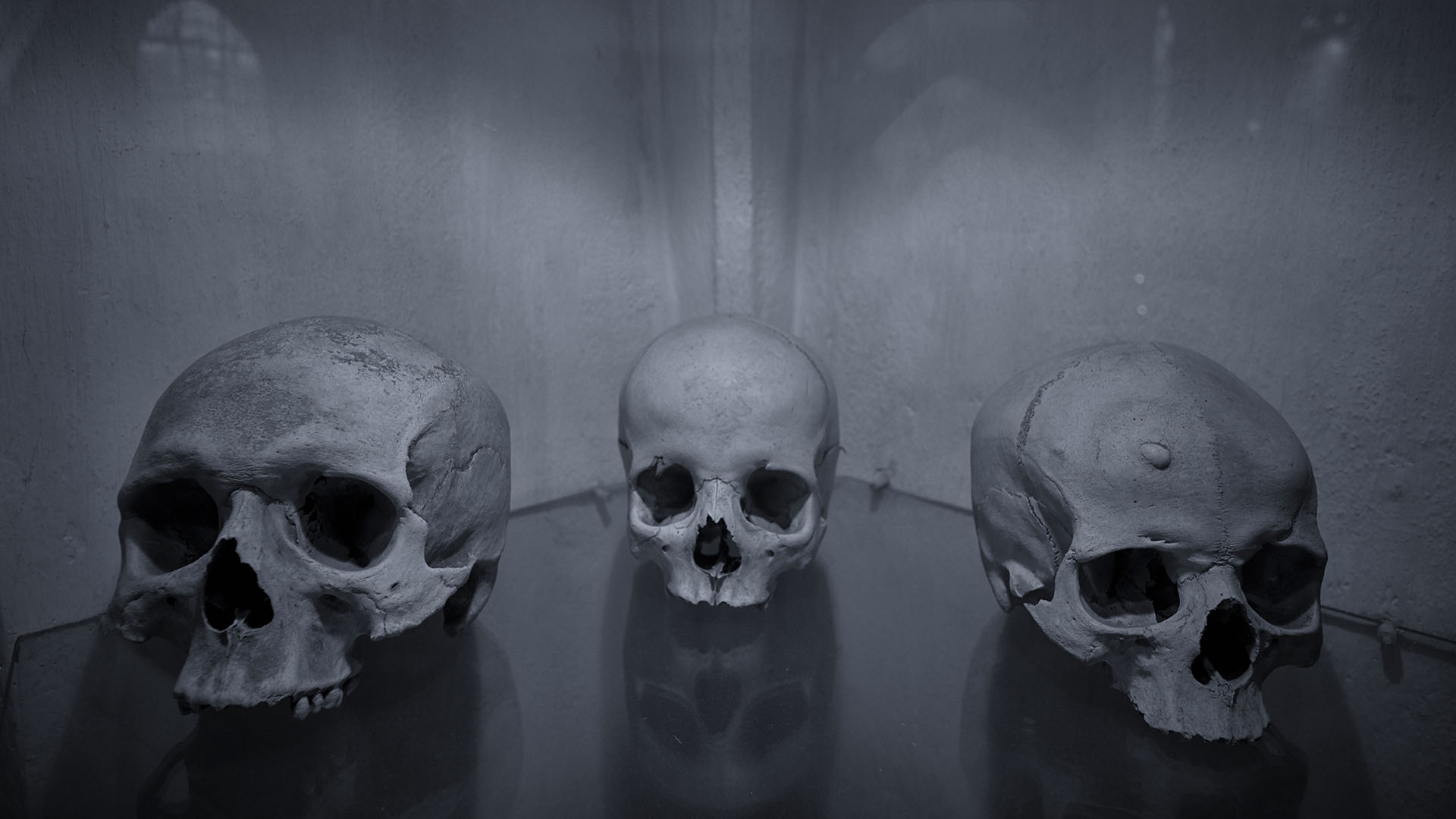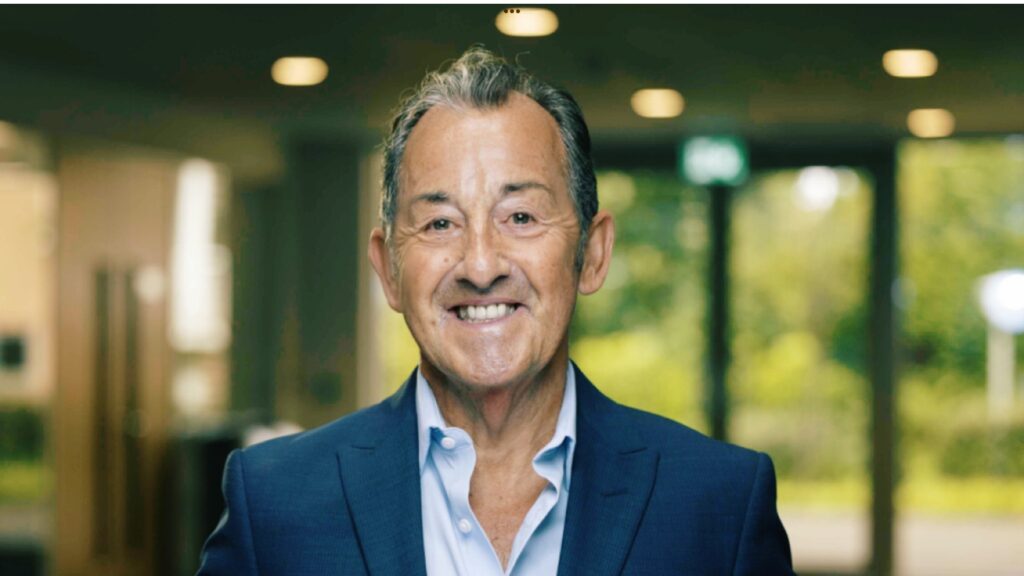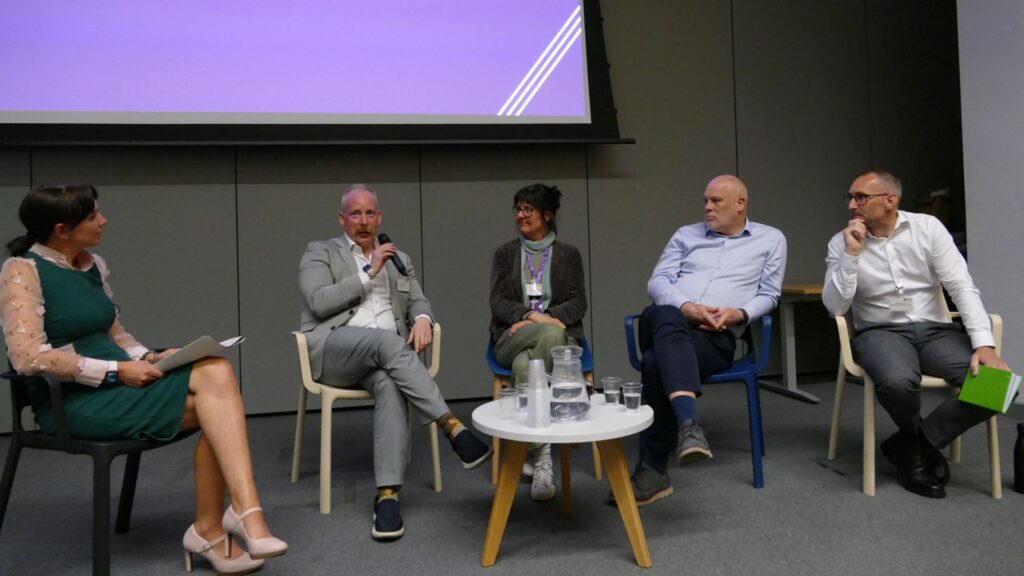

Edge Hill lecturer Dr Rebecca Wynne-Walsh admits writing about some pretty weird films, while confessing that sometimes all she wants to do is watch Moulin Rouge. Again. A film fan ‘first and foremost’, she lets her curiosity guide her.
The lecturer in Film, English and Creative Arts is a self-confessed student of the school of horror. Curiosity has led her to some pretty dark places, most recently the corners of the internet where live-streamed criminal trials, true crime TikTok and the popularity of morally questionable interactive content creators thrive.
Here she reveals there’s much more to the horror genre than meets the eye – and why she isn’t ready to bury Dracula just yet.
Growing up I adored Classic Hollywood cinema. I still do. Musicals like Singin’ in the Rain, noirs like Sunset Boulevard and screwball comedies like Some Like it Hot are so expertly crafted. The legends of the golden age of Hollywood icons were trailblazers, and often creative geniuses who set the gold standard for a global medium.
There are two films which I have extremely vivid memories of watching for the first time, and immediately wanting to watch again. Luc Besson’s The Fifth Element (1997) blew me away on first, and every subsequent, viewing. The wild characters, extensive world building, impressive practical effects and humorous dialogue all combined to create the first film I truly fell in love with. This sent me on a spiral of film obsession that I still exist within.
Butch Cassidy and the Sundance Kid (1969) was the first film I remember simultaneously enjoying and wondering how it was made. The razor-sharp wit of William Goldman’s script, paired with the career-defining performances of Paul Newman and Robert Redford against the backdrop of stunning on-location shooting and high-octane stunts all combine to make a near perfect film. This was the first film that I had fun watching – and had more fun learning about.
Why study films? They’re windows into the social context they are generated from. Like any artform, film is a way of broadening our horizons, intellectually, artistically and socially. If a film is escapist, I ask what the audience is trying to escape. In the 1940s, Hollywood churned out musicals to offer respite from the realities of WW2. If a film is in a language that’s strange and unusual to me, I ask what the significance is of telling stories in this language. An Cailín Ciúin (The Quiet Girl) (2022) was entirely in Gaeilge, the Irish language. Telling stories through this language resists lingering effects of colonial suppression. If a film relays historical events that I’ve never heard of, I question why some historical narratives receive mainstream attention and others are marginalised.
Horror cinema is my passion. It’s such an expansive genre, and can serve so many purposes for different audiences and time periods. Neil Jordan’s Interview with the Vampire (1994) engaged in camp southern gothic visuals while telling a queer-coded story of co-dependent male relationships, blood contamination and fatal addictions in the immediate aftermath of the height of the AIDs pandemic. Films like The Devil’s Backbone (2004) and Painless (2012) dive even further into history, questioning the effects of Franco’s dictatorship and the Spanish Civil War on the children who inherit this trauma. Even the immensely popular Parasite (2019) uses classic horror story-telling devices as a tactic to shine a light on the true horrors of economic inequality in South Korea.
Horror is a genre that shocks our senses, it can tell very powerful stories and get an adrenaline-loaded audience to pay attention to horrors beyond the screen. I doubt vampire stories will be leaving our screens any time soon, with the recent release of Renfield and the continued popularity of television shows such as True Blood, The Vampire Diaries, Interview with the Vampire and What We Do in the Shadows. The useful thing about vampires like Dracula is that they can be used as a template and shaped to the current tastes of a generation.
I really don’t think the cinema-going experience has lost its allure. Comparing Spanish zombie-apocalypse found footage film [REC] with the likes of camp Hammer classic The Devil Rides Out or FBI serial killer thriller The Silence of the Lambs is almost impossible. Different horror trends are not so much apples and oranges but trees and computers, they’re often not even in the same category. I would always refer to films such as Psycho, Jaws, Ring, and The Orphanage as essential viewing. But some of my personal favourites are The Exorcism of Emily Rose, I Walked with a Zombie, Saw and Hostel… all the indulgent over-the-top stuff are my favourites.
When I first watch a film, it’s as a fan first and foremost. I try to reserve being overly critical or theoretical at least until the credits roll and second viewings. There are few pastimes I enjoy more than losing myself in the world of a film and going on an engaging emotional journey. I watch films I love over and over again. I can recite the scripts to films like The Princess Bride or Casablanca in real time. For me, that experience and the suspension of disbelief never gets old.
Find out more about studying film at Edge Hill University
March 4, 2025


